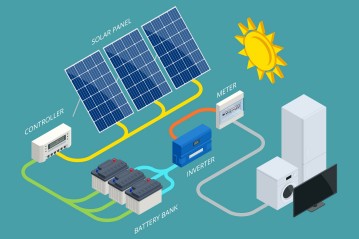
What is a Solar Controller?
A solar controller, also known as a charge controller, is a device that regulates the amount of charge that is sent to the battery from the solar panel. The controller ensures that the battery is not overcharged or undercharged, which can damage the battery and reduce its lifespan.
How Does a Solar Controller Work?
A solar controller works by monitoring the voltage of the battery and the solar panel. When the battery voltage drops below a certain level, the controller will allow more charge to be sent to the battery. When the battery voltage reaches a certain level, the controller will reduce the amount of charge that is sent to the battery.
There are two main types of solar controllers: pulse width modulation (PWM) and maximum power point tracking (MPPT). PWM solar controllers are the simpler and less expensive option. They work by turning the solar panel on and off to regulate the amount of charge that is sent to the battery.
While MPPT solar controllers are more advanced and efficient.They work by constantly adjusting the voltage and current to ensure that the solar panel is operating at its maximum power point. The solar controller amp ratings normally run from 1 amp to 80 amps, voltages from 6-600 volts.
Why Do You Need a Solar Controller?
A solar controller is essential for anyone who wants to use solar energy to power their home or business. Without a controller, the battery can be damaged and the solar panel can be overloaded. A solar controller ensures that the battery is charged correctly and that the solar panel is operating at maximum efficiency.

0 comments